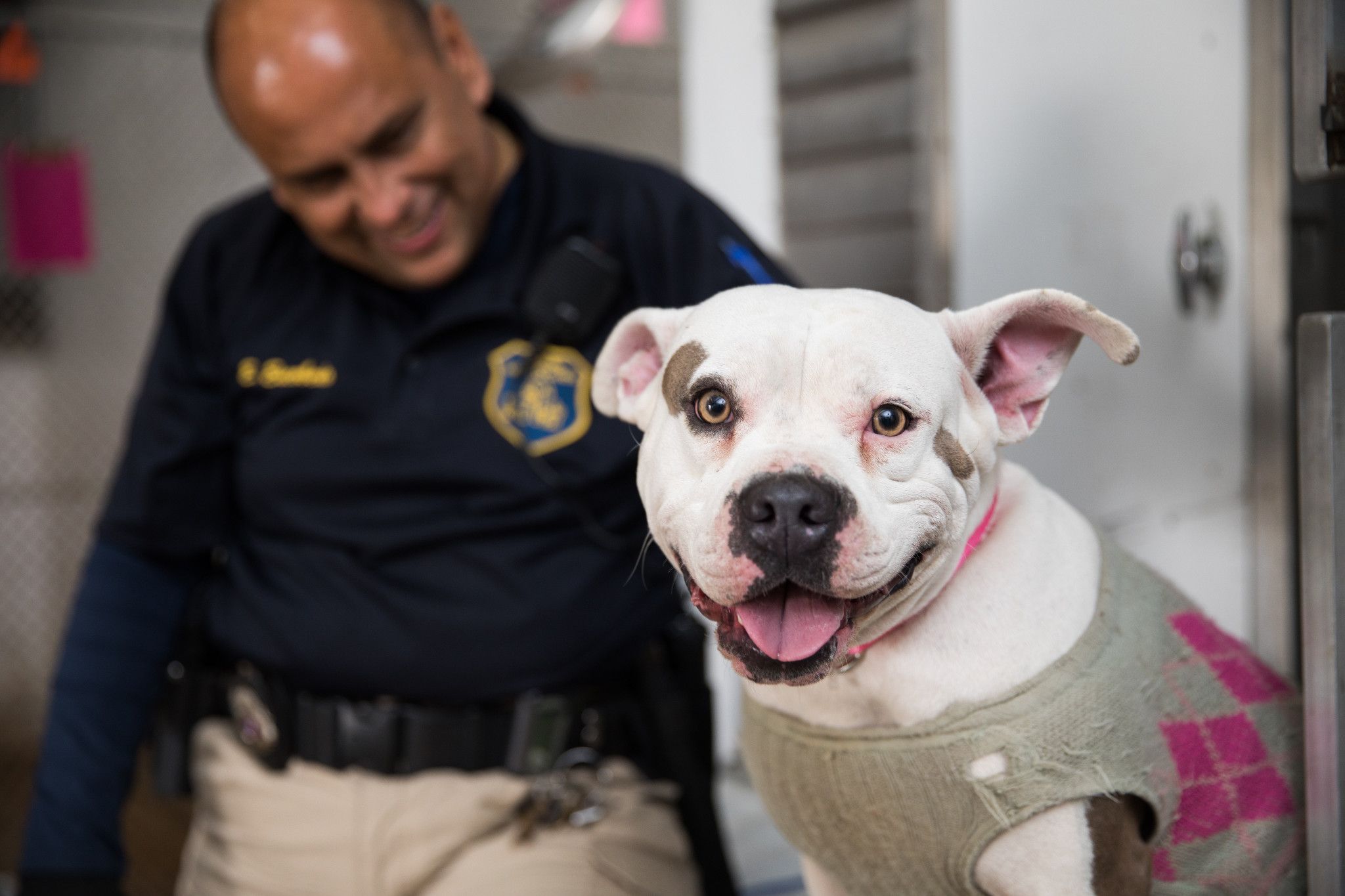
The Importance of Maximizing ‘Capacity for Care’
July 23, 2024
Capacity for Care is a concept in animal sheltering in which a shelter establishes the number of animals who can be humanely cared for. Capacity for Care ensures shelter staff can meet the needs of every animal, regardless of their age, health status or personality. It is an important concept, however it is sometimes misunderstood, poorly implemented, or used as an excuse to euthanize animals unnecessarily.
Properly managing Capacity for Care is critical to ensure the shelter has the capacity for an appropriate pathway and outcome for each pet. It ensures that each individual animal receives the minimum desired care while at the shelter, and that staff are not overly stressed being forced to care for more animals than they are able to within the constraints of a workday. It prevents overcrowding, a known factor for increasing stress and disease spread. And lastly, crowding, and large levels of illness impact a shelter’s reputation, detracting from the adopter’s experience and reducing public confidence. This can negatively influence adoptions, public or donor funding, and the reputation of the shelter in the community.
The three key factors that directly impact Capacity for Care are:
- The number of staff and volunteers available to care for animals.
- The number and size of available kennels in the shelter, from neonatal kittens, to cats, and big and small dogs.
- The average length-of-stay for animals in a shelter’s care.
However, there are other factors that impact Capacity for Care that we’ll get to later in this document that are every bit as important.
Calculating Capacity for Care
Staff Capacity for Care – As a general guideline, The National Animal Control Association and The Humane Society of the United States estimate about 15 minutes is needed per animal, per day, for basic cleaning and feeding. This estimate does NOT include time for enrichment and live outcome activities and may vary depending on the population of animals in the shelter as animals with special needs or are otherwise more vulnerable will require more time. The formula using this estimate is:
15 minutes x average daily animal population/60 = number of hours needed to care for animals
Number of hours needed to care for animals/number of hours in a workday = number of staff or volunteers needed to provide basic care
Based on this formula, a shelter with 100 animals on site would calculate 15 (time per animal) x 100 (avg daily population)/60 (minutes per hour) and would find that they need 25 hours of animal care to provide the basic needs of animals in their shelter each day – or a little more than 3 staff members (3.125) or volunteers working an 8-hour day.
Again, this is the minimum amount of care, and can vary greatly if a shelter has a lot of special needs pets or seeks to provide the full complement of enrichment for shelter pets, and most importantly - live outcomes for those pets.
Shelter Capacity for Care – The most basic calculation for shelter capacity is straightforward, even if not fully helpful. The most basic calculation is taking the number of kennels in a shelter that can provide proper housing for animals and that be the shelter’s capacity for care. If a shelter has 100 kennels, it will have the capacity for 100 animals.
However, that’s not fully helpful. Dogs and cats need different types of housing, with dog size being a variant, as well. Litters of puppies and kittens can share kennels, but also, those kennels have different requirements than those for a single animal. Also, there should be some housing for animals that need quarantine for observed illness to avoid cross contamination. And finally, there needs to be some plan for the daily cleaning process so dogs can get out of their kennels during that time to avoid getting wet or deal with the stress of the daily cleaning routine.
Analyzing Shelter Capacity for Care:
- Determine the volume of animals you can safely house by type of animal (age/species) based on kennel space.
- Review your records in shelter management software and determine the average daily capacity of animals at your shelter by age and species and compare them to actual shelter capacity. From here, you can determine for whom additional space is needed and how to go about making it work.
Expanding Capacity for Care
Capacity for Care can be a very valuable tool for helping shelters maintain staffing and capacity levels to provide proper care for all the animals in their shelter. However, Capacity for Care should not be used as a justification for euthanizing healthy/treatable animals. Rather, Capacity for Care should be used to implement messaging in communities and action steps as population climbs near the capacity for care estimate. There are many solutions for expanding capacity that should be aggressively implemented to prevent euthanasia due to capacity constraints:
Increasing Foster Homes – foster homes are a double win when it comes to Capacity for Care; not only are animals out of the shelter freeing up space, but fostering frees up shelter care hours, thereby building more capacity. Getting more animals into foster homes can dramatically increase Capacity for Care. The value of doing these calculations can be underscored as follows. Matching your shelter’s Capacity for Care with your average daily populations by animal size and species can help you better determine what types of animals you need foster homes the most.
Increasing Volunteers – the number of available staff is often a barrier for Capacity for Care. However, volunteers can help grow staffing capacity by doing many of the main functions for care of animals in the shelter. These include cleaning, feeding, medicating, and providing enrichment in and out of the shelter.
Repurposing Shelter Space – most shelters have spaces in them that are under-utilized. Repurposing shelter space can be a creative way to help increase capacity by finding new places to pop up a set of kitten condos or a place for a dog to spend his day in an office versus a kennel.
Implement a Managed Intake Program for Non-Emergency Intake. While animals that need urgent support should be taken in immediately, many animals in communities don’t have such an urgent timeframe. By scheduling appointments for non-urgent intake, shelters can help control the inflow of animals into the shelter to help manage Capacity for Care for both staff and the physical shelter.
Decreasing Average Length of Stay – The primary method for increasing capacity is decreasing a shelter’s average length –of –stay, (the average amount of time between when an animal enters a shelter and when they leave). This can have a dramatic impact on the volume of animals in a shelter at any given time. By decreasing the length of stay, a shelter can minimize the number of animals they’re caring for at any given moment. There are many great resources for decreasing length of stay, including Best Friends’ Length of Stay Manual, but here are some tips for decreasing length of stay to get you started:
- Be Open every day – the more convenient the hours are for the public to come after traditional working hours, for example, the better. Be open and make animals available to adopt. Read more about open adoptions.
- Be Creative and Fun in Your Marketing – it takes a lot to get attention in the cluttered social media landscape.
- Embrace Open Adoptions – people are coming to your shelter to adopt because they want to be part of the lifesaving solution. Let them. Quit using artificial barriers to turn them away.
- Increase Return to Home – the fastest way out of a shelter for most animals is to go back to their original home. Scan for microchips. Proactively and enthusiastically use social media as much as possible, to reconnect with owners.
- Let Pets go Home the Day They're Adopted – even if they aren't spayed or neutered, do a foster-to-adopt and bring the pet back for surgery. It's a better experience for the adopter and the pet, and it gets animals out of the shelter more quickly, freeing up more Capacity for Care.
- Make a Plan for All Animals – from day one, you know the most likely way they'll get out of the shelter - either through RTO, adoption, or transfer. Start planning that pathway the day they come in.
- Keep Pets Healthy – both physically and mentally. Vaccination on intake, proper shelter sanitation, in-kennel enrichment, and shelter play groups are your allies.
- For Harder-to-Place-Pets – start treating them as long-timers on day 1, not day 60. You know the pets who are slow to move through your shelter - FIV/FELV cats, dogs with blocky-shaped heads treat them like long-timers on day 1.
- Fast Track Highly Adoptable Animals – including puppies, kittens and small dogs, so they can get out of the shelter faster so more shelter staff time can be spent with animals who need more help.
Best Friends Open Adoption Playbook
Best Friends Overcoming Adoption Barriers Research
Best Friends Animal Society Length of Stay Manual
Best Friends Animal Flow Manual

Brent Toellner
Senior Director, Lifesaving Programs
Best Friends Animal Society
If you enjoyed this editorial, you can find our complete catalog of editorials here.